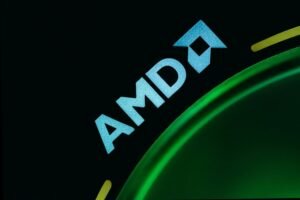MICROSOFT (ON 16th May) said that it will give its cloud computing clients a platform of artificial intelligence (AI) chips from Advanced Micro Devices (AMD) to compete with Nvidia components. Details will be presented during the developer conference, Construction, next week.
A sneak peek of the upcoming Cobalt 100 custom CPUs will also unveiled during the conference.

Microsoft’s Strategic Move with AMD
Microsoft’s decision to offer AMD alternatives to Nvidia’s AI processors reflects a strategic move to diversify its cloud offerings and cater to a broader customer base.
AMD has been making strides in the CPU market and is now vying for a position in the AI processor space. By leveraging its expertise in high-performance computing, AMD is positioning its GPUs as viable alternatives to Nvidia’s, promising comparable performance at potentially lower costs.
The introduction of AMD’s AI processors in Microsoft’s cloud services gives customers more options, allowing them to select the processing solutions that best fit their needs and budgets. This competition could drive innovation and lead to better performance and pricing models for cloud-based AI services.
AMD vs. Nvidia: A Comparison
When it comes to choosing between AMD and Nvidia for AI processing, there are several factors to consider. Both companies offer high-performance GPUs designed for demanding AI workloads, but they each have their strengths and weaknesses.
Performance Benchmarks
While Nvidia has been the established leader in AI processing, AMD is closing the gap with its latest GPU offerings. Benchmarks and performance tests will be crucial in determining whether AMD’s processors can truly match or exceed Nvidia’s capabilities in real-world AI applications.
Software Ecosystem and Support
Nvidia has invested heavily in its software ecosystem, including comprehensive libraries and frameworks for AI development. AMD will need to ensure that its processors are well-supported with compatible software tools to attract developers and organizations that rely on these resources.
Cost Implications
One of the most significant factors in the AMD vs. Nvidia debate is cost. If AMD can offer competitive performance at a lower price point, it could entice cost-conscious customers to make the switch, potentially disrupting Nvidia’s market dominance
The Impact on the Cloud Computing Market
Microsoft’s offering of AMD AI processors has broader implications for the cloud computing market. It signals a shift towards more choice and flexibility for cloud customers and could influence other cloud service providers to follow suit. By introducing an AMD alternative, Microsoft is encouraging Nvidia to continue advancing its AI processing technologies, which ultimately benefits end-users. With AMD entering the AI processor market, there’s potential for a significant disruption. If AMD’s solutions gain traction, it could reshape the competitive landscape and force Nvidia to adjust its strategy to maintain its market position.
Move aimed at challenging Nvidia’s dominance?
Microsoft’s introduction of an AMD alternative to Nvidia AI processors is a significant development in the cloud computing industry. It reflects the growing demand for high-performance AI processing and the need for a competitive market that offers choice and innovation.
By providing cloud customers with more options, Microsoft is not only challenging Nvidia’s dominance but also empowering users to select the best solutions for their AI and ML workloads. As AMD and Nvidia continue to vie for market share, the landscape of AI processing is set to evolve, promising exciting advancements and opportunities for all stakeholders involved.
The future of AI processing is looking more diverse and dynamic than ever, and cloud customers stand to benefit from this competition-driven environment. Whether you’re a developer crafting the next breakthrough AI application or a business leveraging ML for data insights, the choice between AMD and Nvidia is now a pivotal consideration in your technology strategy.











